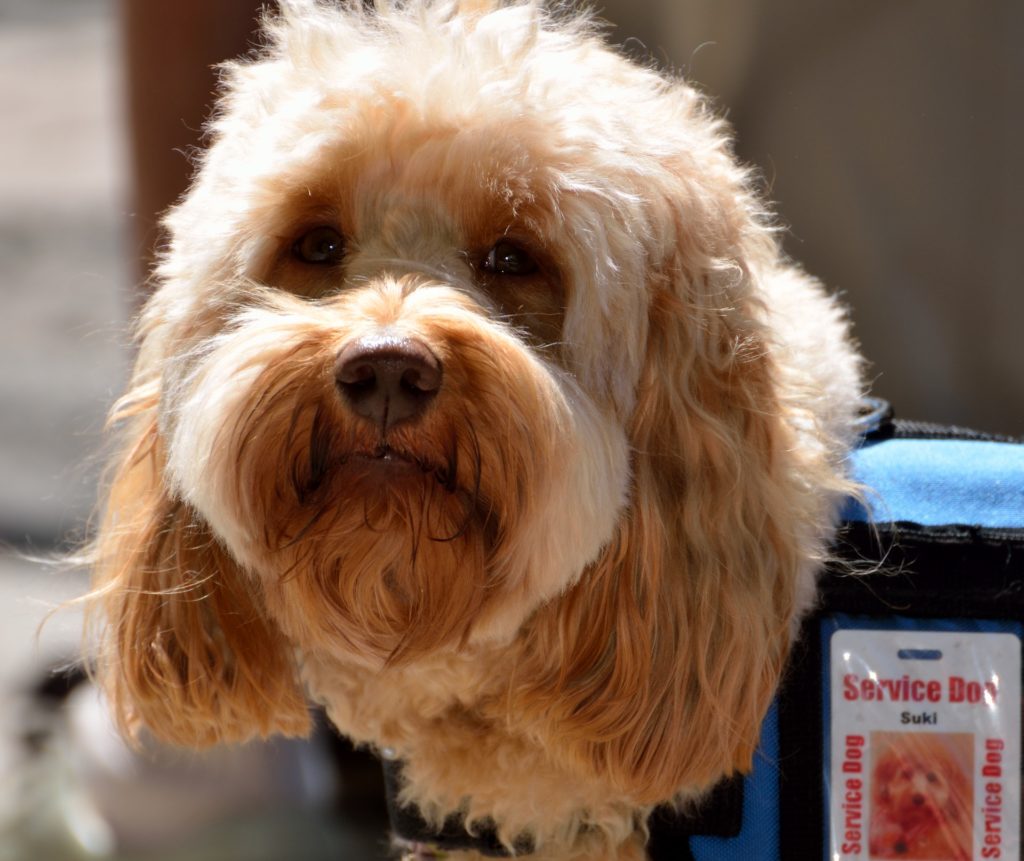Disclaimer: This page is for informational use only. Please note that we do not sell/provide service animals. Continue reading for organizations that can assist you with your search for a service animal.
The presence of a service animal can often provide great benefits to individuals with disabilities, including emotional support, protection, and assistance with mobility-related tasks for individuals with mobility limitations. There is, however, a great deal of confusion surrounding how such animals are classified, and not all animals classified as ‘Emotional Support Animals’ are service animals. Understanding the benefits and limitations of each type of support animal can help parents decide whether a service animal would be potentially useful to their child.
Types of Service Animals
 There are several types of service animals, also known as ‘service working dogs.’ All of them must be specially trained to qualify as service animals. These animals are trained specifically in assisting individuals with disabilities to perform tasks that the individual would not otherwise be able to perform due to their disability. Under the Americans with Disabilities Act (ADA), only dogs qualify as service animals, though some guidelines have been reworked to include miniature horses as well. Note that service animals are not considered pets.
There are several types of service animals, also known as ‘service working dogs.’ All of them must be specially trained to qualify as service animals. These animals are trained specifically in assisting individuals with disabilities to perform tasks that the individual would not otherwise be able to perform due to their disability. Under the Americans with Disabilities Act (ADA), only dogs qualify as service animals, though some guidelines have been reworked to include miniature horses as well. Note that service animals are not considered pets.
- Guide Animals: Trained to help individuals (such as those with vision issues) navigate public settings.
- Hearing Alert Animals: Trained to help individuals with limited or absent hearing identify sounds, such as alarms, doorbells, phones and automobile sounds.
- Medical Assist Animals: Trained to assist individuals experiencing situations where they are unable to perform major life tasks independently (such as retrieving items, opening doors, turning on lights, etc.).
- Mobility Animals: Trained to provide stability and support for substantial balance or walking problems due to physical disability.
- Psychiatric Service Animals (PSAs): Trained to help perform major life tasks for individuals with psychiatric or emotional disabilities (such as mania, anxiety or panic attacks, etc.) who cannot perform certain tasks themselves. Requires a letter from a licensed therapist/psychiatrist indicated this is needed.
- Seizure Alert Animals: Trained to predict seizures and get external help for a person experiencing a seizure.
Note that ‘Emotional Support Animals (ESAs)’ (also known as ‘comfort animals,’ ‘comfort pets,’ or ‘companion animals,’ are not considered service animals but fall under the classification of an ‘assistive aid.’ ESAs do not need specialized training, as they are defined as ‘an animal that, by its very presence, mitigates the emotional or psychological symptoms associated with a handler’s condition or disorder.’ Any animal (including birds, dogs, cats, mini-pigs, and rodents) can potentially qualify to be an ESA. ESAs do not have the same legal protections as service animals. ESAs are legally allowed to fly with emotionally disabled handlers in the cabin of an aircraft and can qualify for no-pet housing, but do not have the more extensive protections that trained service animals receive. Note that ESAs also require a letter from a licensed mental health professional, and these are not the same thing as a psychiatric support animal (PSA).
‘Therapy Animals,’ which are trained to provide emotional support and comfort to individuals other than their handler, are not considered service animals and are also not covered under ADA protections.
What Kinds of Benefits Do Support or Service Animals Provide?
Service animals provide concrete benefits in that they help individuals with disabilities perform tasks they otherwise would be unable to do, such as opening doors, pressing elevator buttons, or retrieving dropped items. They are not classified as pets, and their primary function is to assist in the tasks of daily living and keeping the owner safe, as opposed to providing emotional support. Emotional support animals primarily provide emotional support and mitigate distress, and are classified as pets.
Obtaining a Service Animal
Service animals are trained and certified by one of several organizations, which are highly selective in their criteria regarding what kinds of dogs are suitable for service animal use. These groups include:
- International Federation of Guide Dog Schools
- Assistance Dogs International
- International Association of Dog Partners
- Dogs for the Deaf and Disabled Americans
- 4 Paws for Ability
- Paws for a Cause
Because service dogs are trained to assist with specific disabilities, individuals applying for such a dog must fill out forms detailing their medical history and other evaluative criteria. They are then placed on a waiting list, and are kept updated regarding their case’s status. Non-profit organizations are often the best organizations from which to get a service animal, as they often provide continued support for new handlers in ways that private companies often do not. In certain limited situations, individuals can obtain a rescue dog and hire a certified trainer to train the animal, but this option can be very expensive.
Learn More About Service Animals:
- Airline Crackdowns on Emotional Support Animals Incite Controversy
- National Service Animal Registry
- Service Animal FAQs
- Emotional Support Animal FAQs
- Therapy Animal FAQs
- Service Animals and the Americans with Disabilities Act (ADA)
- ADA Requirements: Service Animals
- Legal Issues Surrounding Working Dogs and Support Animals
- Service Dogs for Panic Disorders, PTSD and Depression

